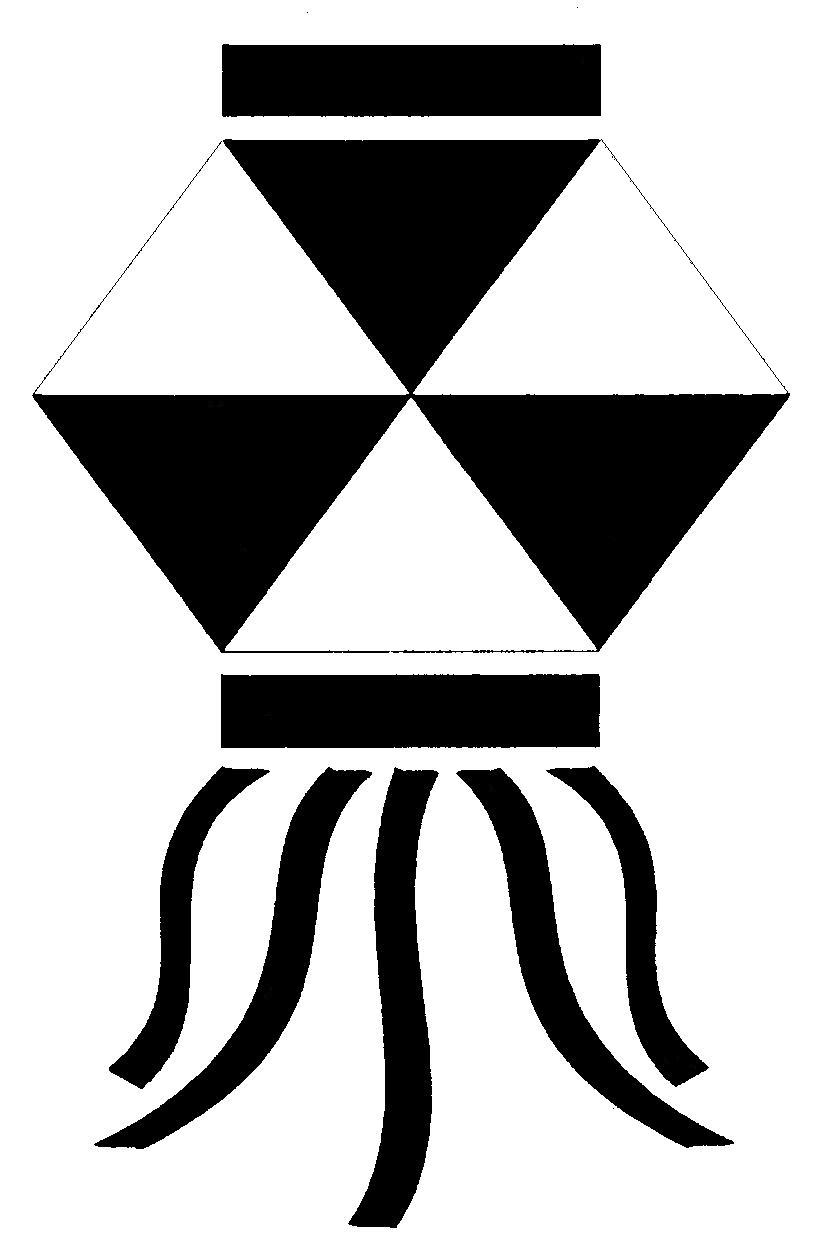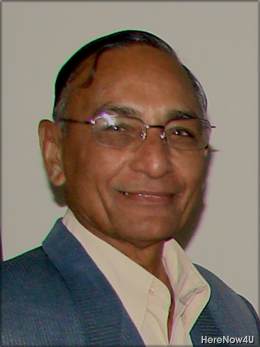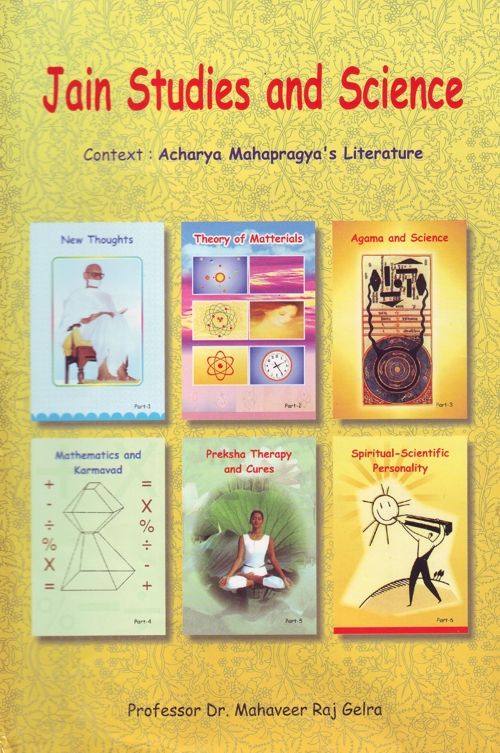
Mahapragya has two important contributions in the field of mental training -
- Preksha Meditation
- Life Sciences
Both these practices are not only rooted in philosophical and spiritual treatises but also encompass sciences - medical and psychological. Preksha form of meditation has inherent therapeutic values while the studies of 'life sciences' enhances the moral values. Both together form a holistic approach towards life. Preksha meditation is aimed at tension alleviation, health augmentation, moral reinforcement and personality development. Before devising the Preksha meditation, Mahapragya deeply studied all the streams related to the science. He reveals that philosophy and biology are in fact complementary to each other - former suggests that the body is driven and directed by the amorphous consciousness, while the latter gives insight into the micro chemical body mechanism. As both spiritualism and science are investigating the ultimate, they inevitably meet somewhere. To know the energy centres and the nervous system of the body is equally important as to know the consciousness. Mahapragya's comparative studies of science and spiritualism have brought the two fields near to each other and have benefited the mankind with the best of the both. We shall elaborate the experiments on psychological aspects, medicinal therapy and Preksha in this section of the book. The salient points of discussions will be -
- Preksha
- Psychology
- Energy Centres - Glands and Nervous System
- Application of Preksha in disease control and management
1. The Basic Concept of Preksha
- It's Aim - Let truth be uncovered by self
- It's Meaning - Pra + Eksha - to observe keenly and deeply.
- It's Method - Let your soul peruse yourself. It is like using bow and arrow. In Preksha, body is bow and mind is arrow. Our concentration of energies is like stretching the string of the bow to its fullest extent with Arjun's eye on the sole aim - the soul.
- It's Target - Let your conscious vision become so concentrated that it can travel down from body to breath, karmas and ultimately to soul. You become so aware and awakened that you can feel the finer, inner vibrations of the self and can reveal your true identity.
- It's Definition - Mahapragya has laid equal importance to body as well as soul. According to him, until the body is polished, soul cannot be disciplined. With this vision, he called Preksha meditation as a concerted and combined effort to train all the seven aspects simultaneously - breath, body, conscience, mind, emotions, karma and soul.
- It's Experiments - Mahapragya has enumerated an eight stage theoretical background of practising Preksha -
- Kayotsarg - Relaxation and initiation
- Antaryatra - Beginning of inner journey
- Swashpreksha - Concentration on breathing
- Sharirpreksha - Concentration on body
- Leshyadhyan - Awareness of colour halos
- Bhawrta - Determination and resolve
- Chaitanyapreksha - Soul searching
Preksha meditation starts from the cosmic body and slowly travels inwards. Medical science has established that the body is governed by electro-chemical vibrations. As an ocean encompass enormous waves, our body too, is an ocean of emotional and spontaneous waves. Sharirpreksha involves awareness towards these internal waves which emanate from our conscious and unconscious minds and control our activities. Body actions result from a combination of wide ranging chemical processes which need to be examined by the Preksha practitioner. The projection of our concentration yields spectacular results of reinforcing positive attitude and dilution of detrimental thoughts.
2. The Three Dimensions of Preksha
- Yoga
- Meditation
- Therapy
Yoga and meditation have a long standing historical association. Both are processes of spiritual therapy, healing and cure. Human behaviour can be substantially modified by their practice. As on today, majority human ailments are neither physical nor mental, but are psychosomatic. These diseases of emotional origin can be cured by the practice of Preksha meditation. Mahapragya's confidence on the therapeutic values of Preksha emanate from the experimental facts of controlling anger, ego, lust and other emotions by it. Preksha awakens the mind, modifies the hormonal secretions and strengthens the virtuous emotions all of which jointly mitigate the psychosomatic disorders. To corroborate, Mahapragya organized several camps to propagate the technique of Preksha. Experiments on thousands of participants had substantiated that the confluence of medical science and spiritual practices can yield significant results.
2.1. Scientific Research
Though the feedback from those who practice yoga and meditation has been encouraging, yet the clinical results play an equally important role in establishing their efficacy. Doctors have found that the meditation reduces the demand of oxygen and amount of lactate in the blood thereby reducing the burden on heart by around 25 percent. In numerous medical research papers it was reported that the various meditative and yogic techniques enhance the alpha waves in the EEG, depicting the mental peace and tranquillity.
Enthused by these studies, Mahapragya adopted Preksha meditation for therapeutic applications. It was a new beginning and encouraging results were achieved in containing the diseases like, cardiovascular, hypertension, high blood-pressure, depression, stomach ailments etc. It is like a panacea in combating sexual disorders. Though there is no cure for dreaded disease like cancer, the suffering can be reduced substantially.
3. Sound Therapy
Sound plays an important role in the therapeutic applications of Preksha. The tranquilizing effect of mother's lullaby is very well known to all of us. A soothing rhythm can induce calmness. A few years ago, a novel concept of 'fu-mu' was developed by the world renowned entertainment electronics company, Philips. In this, functional music was developed in such a manner that when the potential customers visited their show-rooms, they were more inclined to buy the products being displayed there due to the soothing sound. Mahapragya experienced that the incantation can augment our energy resources. Various hormonal activities can be energized by the application of hum and reverberations.
Empirically, Mahapragya has found that the echoing of the 'lunnn...' is effective in cardiovascular ailments while the sound 'hunnn...' in the cases of liver malfunctioning. To make the chanting of these words effective, one has to synchronize the sound pulsations with the rhythm of respiration. This coordination along with the emotional resolve helps arouse the consciousness.
3.1. Incantation of 'Ar-hu-m'
If a proper rhythm is imparted, says Mahapragya that every hum can become a mantra. Arhum is one such hymn. In Preksha, its nine reverberations during the beginning of the meditation process help the practitioner to isolate himself from the environment. As this mantra contains three tones, it gradually acts, firstly on the thyroid glands (electricity centre), then on the frontal lobe (peace-centre) and finally entire nervous system (energy-centre).
Wide ranging experiments and the feedback received thereof is so convincing that the effects of sound-preksha have the capacity to take you to the new horizon of experience.
4. Colour Therapy
The logical next step after the study of effects of low frequency sound, Mahapragya turned towards the high frequency colour to further investigate the finer emotions of a bio, so that the personality can be studied and modified to our advantage. Whatever a bio exhibits outwardly is linked with its inner status. This relationship is manifested in the coloured aura (leshya) surrounding a bio. Halo surrounding a person divulges its true inner state - both emotional as well as biological. It is the blue-print of one's health - both temperamental as well as corporal. This radiance consists of several colours - white, red, yellow, grey, blue and black. Each colour is associated with characteristics which could be either noble or impure. Halo is like a camouflaged signature of a person's mental and physical state and its hues change as the latter changes.
Entire body always remain surrounded by the aura, but its maximum concentration is found at the back-head of a person. Its study has become possible by the advent of thermal cameras. These thermal photographs divulge valuable information about the aural radiance and thereby about the personality. Renowned Aura specialist Leo Velloz has decoded properties of various colours—
Deep Red - hard working likes power, realistic and good stamina
Red - excitement, energetic, competitive, winnder, strong will power, sexual and entrepreneur
Orange - productive, creative, adventurous, entrepreneur and loves life/
Orange-Yellow - analytical, intellectual, meticulous, logical, structured and scientific
Yellow - playful, sunny, easy-going, creative, intellectual, entertaining, curious and active
Green - social, natural, contented, harmonious, communicative and quick minded
Deep Green - quick minded, goal-oriented, social, material., communicative and organiser
Blue - caring, sensitive, loving, helpful, loyal, peaceful, helpful and nurturing
Indigo - clarity, calm, deep values, loving, loyal, introvert and artistic
Violet - intutive, artistic, sensual, theorist, futuristic, visionary, charismatic and innovative
Lavender - imaginative, mystical, fantasy, soft, fragile, sensitive and dreamer
White - pure, imaginative, quiet and spiritual
4.1. Atom and Aura
An American lady Dr. J. C. Trust captured the aura of several persons using high frequency cameras. Analysing the results of these photographs, she writes in her book, 'Atom and Aura' that the outer beauty of a person has little to do with the virtuosity. She states, "I have seen several mischievous characteristics in the aura of externally handsome and beautiful people. Conversely, there were several ugly looking personalities who possessed pristine, spotless and uncontaminated aura." She laments that today people have become more aware of their aesthetics but do not inculcate gracious thinking.
4.2. A Real Episode
Aura specialist Sh. Sunder Rajan has authentically analysed the aura of Mahapragya. He said, "Your aura is one of those rare personalities who are great. All the colours involved are sacred, brilliant and luminous. Your halo is abundant in yellow, blue and green colours which are indicative of acumen, intelligence and superlative vision. And the most remarkably noticeable property is that it contains no impure and distorted colour."
Mahapragya too has written extensively on this esoteric subject of aura. He says, "A person may be in front of us but his temperament remains veiled. What we see is a corporeal body, whereas the disposition of a person is difficult to comprehend. Is it possible to know one's characteristics without association? The answer lies in deciphering one's aura. This art deserves better exposure so that the hidden secretes of a complex mind can be effectively revealed."
4.3. Temperament and Aura
From the experiments of Preksha, it was established that the connection between the mental disposition is two way - the aura surrounding a bio is manifestation of its mental and physical condition, at the same time, the deliberate concentration on colours (leshya) affect the psyche of a bio. Empirically, it is found that red colour drifts us towards anger while the blue instils drowsiness. In fact, colours or leshya have wide ranging effects on our behaviour and consequently on our success or failure.
A proper understanding of Principle of Leshya is essential to guide us towards a successful life. Mahapragya says that the nodal point of soul and body is that part of our brain which is called' I imbic system' where our emotions generate. If in this section of brain, we meditate on the radiant colours, cleansing action on our emotions automatically starts. This process is named, leshya-meditation. Leshya is a typical Jain classical word which has been extensively dealt with in the Agams where the dravya-leshya and bhav-leshya are separately described. It essentially means sukshma pudgals (quadons and octons) which contain the information of colour.
Leshya is a fact of our lives. It is a mirror which images our mental and physical health. Once this is studied, clue to our refinement and improvisation can be obtained. Owing to this fact, people are employing the aura to diagnose certain diseases as well as to alleviate psychosomatic symptoms for a better way of life.
4.4. Aura and Ailments
Mahapragya stresses the fact that the aura contains an encrypted message of our inner being. A wave front of corona forms an inseparable web around us. This pattern of radiance is dynamic as our thoughts are and it reflects everything including bonafide and malafide intentions. As is matter of common knowledge, all diseases have their seeds in the micro-organisms of the body. The presence of such harmful activities at micro level are manifested in our aura and if detected in time, curative process may be initiated well in advance before they incubate to spread as an ailment.
An ingenious method is developed by Mahapragya as a part of his Preksha technique. This is Swash-preksha. This is found to be of help in containing various psychosomatic disorders, Respiratory process of inhalation and exhalation can be synchronised with the meditation of selected colours thereby cleaning the aura and emotions with it.
5. Scientific Viewpoint
In scientific realm, this subject has not been treated seriously so far and the research, if any, is only in its infancy. However, some correlating evidences are slowly emerging. Scientists have successfully photographed the thermal pictures of humans, animals and plants. All have an aura accompanying them. Its actual meaning with respect to the temperament and health is yet to be established, but some generalisations are now available. In the spectrum of visible light, the colour red is found of contain maximum energy and blue the least. Similar results are claimed by colour therapists who suggest that the red and orange colours are associated with anger and violence while the blue with gentleness.
When more and more practical results will follow from the efforts likethose of Mahapragya and others, perhaps scientists too will come forward to substantiate the findings of aura and related therapeutic advantages.
6. Conclusion
Leshya-meditation and invocation of various sounds are innovations which can be credited to Mahapragya. His experiments have yielded repetitive results to establish a clear link between various energy centres (hormonal glands and brain) of the body and the different hues of the light and the rhythms of the music. Various hospitals across the world have accepted the efficacy of soothing music and bright and colourful environment in faster recovery of the patients. Preksha form of meditation thus employs a holistic approach towards the mental, emotional, psychological and physical health.

 Dr. Mahavir Raj Gelra
Dr. Mahavir Raj Gelra

